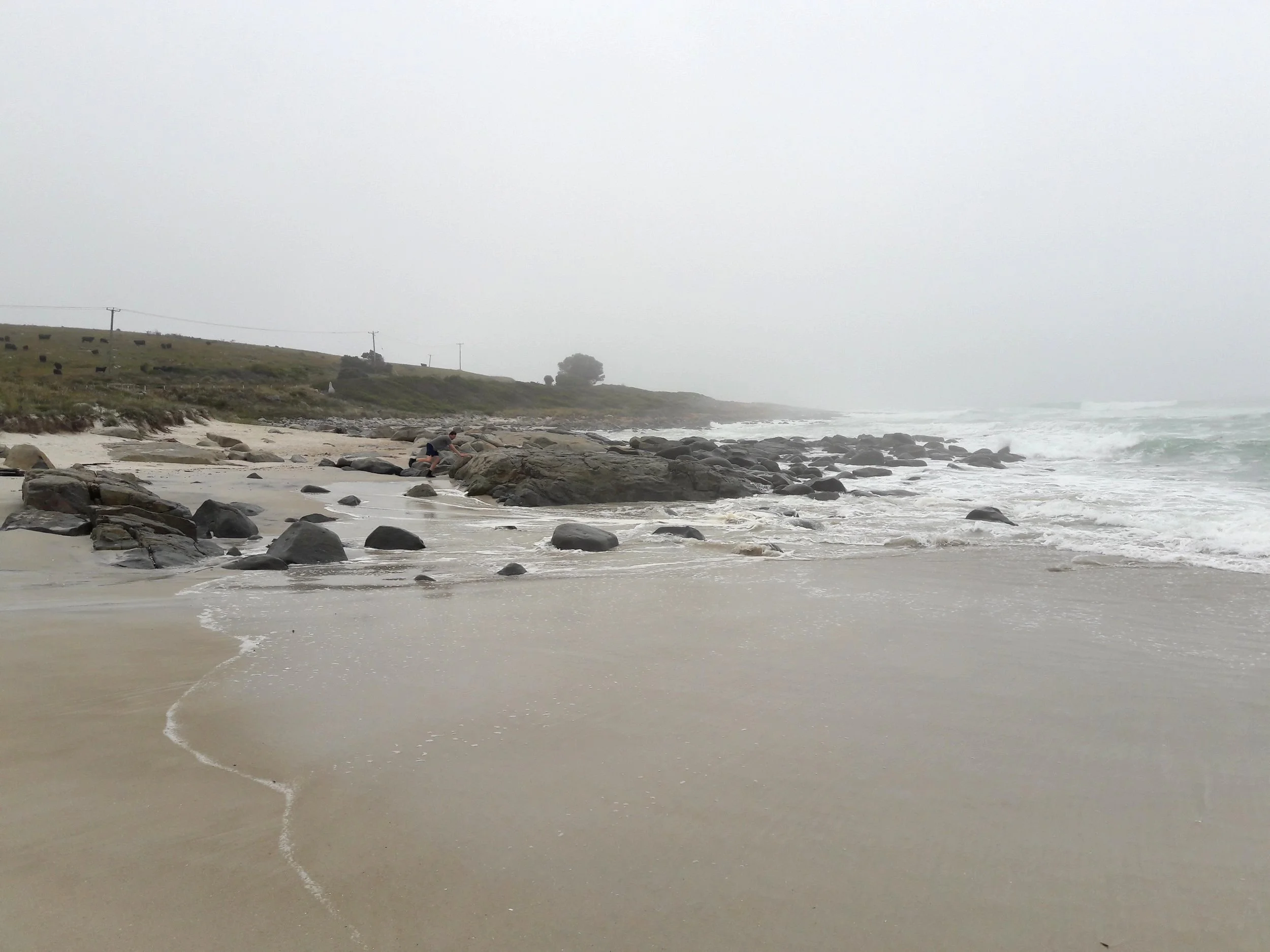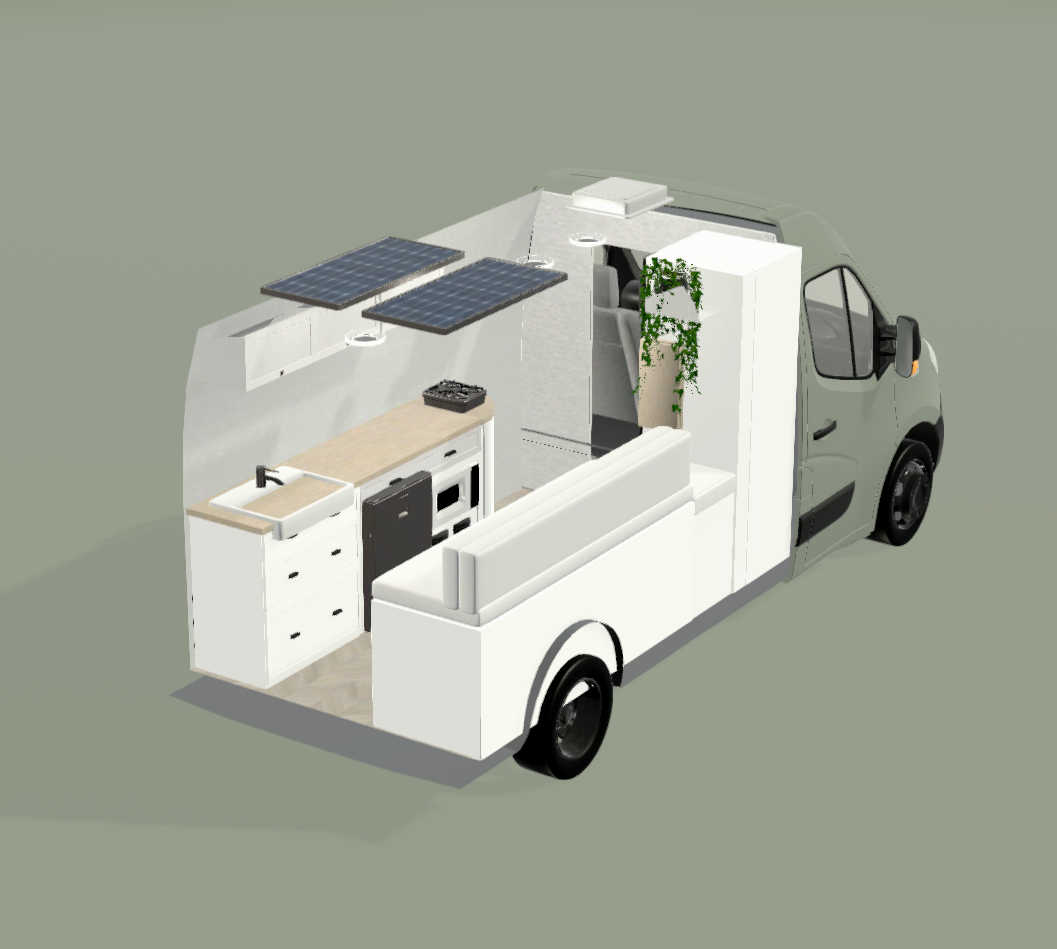How to plan a van build
“Relax, nothing is under control”
Well actually… If someone could let us know how to plan a van build, that would be great.
I am only partially joking. Because we seriously had NO idea what we were doing.
Zeasar (our foster doggo)
I would love to sit here and proudly say that when we bought our van, we had the perfect plan ready to go, and we started the build on Day One.
But in reality, it went nothing like that.
Instead, we sat in the van on Day One contemplating our recent decision to deplete our bank account and buy an empty metal box on wheels. Was it the right thing to do? Could we even do it?
There was a long list of things to do.
And there were too many options and a myriad ways to do them. And our combined building knowledge added up to exactly zero.
Naturally, our excitement levels were at an all-time high.
We were buzzing, happy.
Finally, finally, we could just pack our bags, throw a mattress in the back of OUR van, and hit the road; freedom.
(and we did do this A LOT when we got our van. So many roadtrips. Yay!)
But when we considered sheer size of the task, to convert the van, things got scary.
And Tears soon followed as it quickly became overwhelming.
Our plans changed 20 times within the first fortnight.
We would adjust the sink position, the height of the bed, the entire design.
Before we got our van, we had been so focussed on saving, planning, and dreaming.
And The practicalities of the actual build had somewhat fallen wayward.
The long hours of theoretical planning seemed insignificant against the actual logistics of building a van.
And, we hadn’t actually expected to buy a van so soon (Read more here: The Van).
So we felt even less prepared.
It’s embarrassing to admit some of this.
But when we got Attie, we spent five weeks just deciding on insulation.
After dreaming about it for so many years, it suddenly seemed impossible.
Our remedy was our OneNote notebook.
We were grateful that we had spent so long collecting bits and pieces about vans. It helped us refocus.
We realised we had pretty much settled on our design already. Our task mainly centred on refining the dimensions, choosing the exact positioning of the contents, and picking all the products and the materials (no biggie, right?).
Our OneNote ‘Van of Attack’ plan of attack.
So we made a cup of tea.
Took some deep breaths
And got back to work.
As part of the planning, important questions arose that shaped our design and helped clarify what we wanted from our van.
We asked ourselves some key questions frequently.
And our answers helped us determine our design, the size van we chose, and taught us the importance of creating multifunctional spaces when space is so limited.
We reverted back to our answers constantly when we needed redirection (especially after spending too many hours researching fricken insulation).
some of our key questions:
1. What is the purpose of our van?
Are we full-time van lifers?
At this stage, no (I’m still trying to convince PB on that one). For now, we will just enjoy the adventures when we can. However, we wanted our design to be flexible on the occasion we do move in full-time (even if that’s just a period of time).
Will we be working in the van?
Probably. So we wanted to create a spacious feel in our van. We didn’t want to feel cramped and have to move everything just to find space to plant a laptop.
Do we want to be able to go off-grid?
Yes. We wanted Attie to be self-sufficient; to be able to go rogue (without getting into too much trouble!).
Do we want a full-time bed?
Yes and no. But mainly we wanted a versatile space. Even if that meant making the bed every day.
Would we travel in or warm or colder climates?
Both. We wanted flexibility in our van to handle any condition—from snow to desert.
Will we travel with a pet?
Absolutely. One day.
I mean, how could you not! Animals are amazing.
2. What amenities do we value?
Electricity?
Absolutely. We wanted to work in the van, cook in the van, and feel like Attie was home. Especially when we are off-grid. Electricity is a big part of those goals.
Fridge or cooler chest?
Fridge. And preferably one that is relatively large (so we don’t have to go to the supermarket every day) and efficient (to keep maintenance costs low).
Toilet?
Yes. A luxury for PB, but I felt it was more critical to everyday life. A toilet is very useful when you are parked in suburbs and cities, especially overnight, especially as a female.
Running Water?
Yes. And hopefully some hot water too.
3. What are our non-negotiables?
Stealth mode — a priority for us. We don’t want that knock on the door at 2am.
Fitting in two bikes — including one that has 61cm frame. We like roaming around on wheels.
Open plan living — spacious countertops, lots of sitting room, and open spaces (where possible).
Ample storage — to fit all the items we need, including bigger items like our SUP.
A shower — likely an outdoor shower situation.
Cooking in the van — and keeping it as clean as possible.
We like to blend in to our surroundings (try to spot PB).
4. And the non-essentials?
Standing room — spoiler, we weren’t quite able to get this for PB (turns out it hard to find an affordable, stealth, easy-to-drive van that has 2m clearance).
A pull-out pantry — so cool.
A large sink — for dishes, storage, and of course in case our (future) doggo needs a bath.
A murphy bed — So practical. Night to day would be so easy. But with the engineering and space involved, we didn’t go for this option in the end.
5. Would we make modifications to the van?
Additional windows?
Rotational chair?
Roof racks?
Outdoor storage?
Skylight?
Ventilation?
We knew a lot of this would skyrocket the cost of the conversion, so we tried to pick and choose wisely.
6. What practicalities were there to consider?
Budget — we wanted to future-proof the van, so often gravitated towards quality where the budget allowed.
Water storage — critical. We didn’t ever want to be in a situation where we might run out of water off-grid.
How long we would keep the van — we still aren’t sure! But we wanted to future-proof the van so it lasts a long time and also retains its value.
How to reduce the ongoing and maintenance costs — trying to keep weight and daily costs low, we tried to choose lighter and more efficient items (to save on weight, and therefore running costs).
Insurance — to reduce costs we wanted a low premium, even if that meant higher excess.
Weight distribution—we were constantly considering weight distribution, for safety and insurance purposes, but also so it’s not a rocking rollercoaster when we drive.
Parking locations — we wanted to go anywhere and everywhere. So opted for the more stealthy options where possible.
7. What resources were available to us?
We also tried to keep a mental collection of the tools, knowledge, skills, and even a few helping hands, that we might be there for us.
We are so lucky to have such an amazing support system around us. In those moments when everything seems impossible, you feel immensely grateful for the people who are supporting you.
I don’t think this whole journey would be possible without them.
8. How would we design the van?
We considered old-fashioned pen and paper, winging it, or trying our hand at Sketchup.
But we stumbled across a program called vanspace 3D.
Vanspace 3d is a design program specific to van conversions and has pre-made templates of lots of different vans, including our Renault Master middie.
We found it useful to sketch out the layout we wanted for Attie, particularly as we could easily change or refine our plans (which we did, so many times). The software is not perfect, and it takes a lot of resolve and patience to learn how to use.
But it is constantly being upgraded, so it can only get better!
On the whole, being able to get an accurate, adjustable, and beautiful-looking design was really helpful to visualise the conversion.
Vanspace 3D: A cool visualisation tool. But be prepared to get frustrated—it can be hard to use at times!
9. What was our Timeline?
We also made a rough timeline of when things would happen, and what steps might be involved.
A few steps in our timeline. You might be able to tell we weren’t really sure what we were doing. Bit of guess and see.
10. And Finally.. we got a reality check.
It was never going to go to plan.
We were always going to make mistakes; it’s part of the process. It was never going to be perfect, and we had to accept that (still working on that).
We are not professionals.
It doesn’t matter how it turns out; if you have a van that you take for adventures, that’s vanlife. Vanlife is for everyone; we had to remember to make the van for us, for our own adventure, and to suit our own needs. We had to stop comparing to people with 20 years building experience.
We haven’t got it all figured out.
And we are definitely learning on the go.
But we are excited (albeit slightly frightened) to undertake this adventure of a lifetime.





